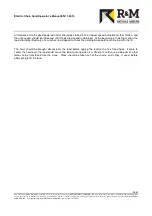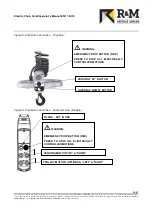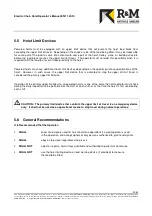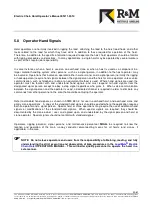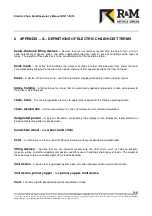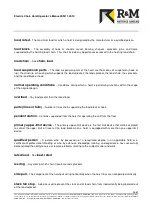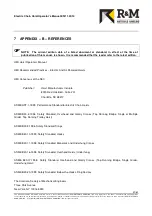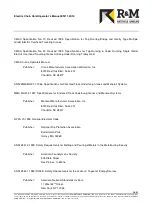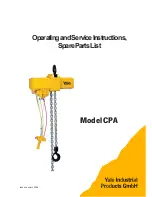
Electric Chain Hoist Operator’s Manual/EN/11.30.10
29/41
This document and the information contained herein, is the exclusive property of R&M MATERIALS HANDLING, INC. and represents a non-public, confidential and proprietary trade
secret that may not be reproduced, disclosed to third parties, altered or otherwise employed in any manner whatsoever without the express written consent of R&M MATERIALS
HANDLING, INC. . Copyright © (2010) R&M MATERIALS HANDLING, INC. . All rights reserved.
5.3 Moving the Load
m
WARNING: DO NOT LIFT PERSONNEL. DO NOT LIFT LOADS OVER PEOPLE.
NOTE: Hoists are intended only for vertical lifting service of freely suspended, unguided loads.
Do not use a hoist to lift loads that are not lifted vertically, loads that are not freely suspended, or
loads that are guided. If such conditions exist, the operator should contact the supervisor for
instructions.
When trolleys are used with a hoist, trolley motion is the traverse travel motion direction of the trolley hoist unit.
Control device markings for this motion should be as stated in the HOIST TYPES section of this manual.
Regardless of the marking designation used, the operator should be fully aware of the direction of trolley motion
that will occur when the control device is activated.
If a load is to be lifted with the hoist hook before moving the trolley, refer to the HOIST MOTION section of this
manual. If a powered trolley has multiple travel speeds, always start motion with the slowest speed and then
increase speed until the desired speed is obtained. Motorized trolleys may have electronic devices that provide
controlled acceleration of the motor and offer a soft or controlled start.
When bringing the trolley to a stop, if a powered trolley has multiple or variable travel speeds, it is recommended
that the travel speed be decreased to the slowest speed before stopping the trolley to minimize load swing.
It is Recommended that the Operator:
SHALL NOT
engage in any activity that will divert the attention of the operator.
SHALL NOT
lift, lower, or transport a load with the hoist until the operator and all
other personnel are clear of the load and the path of the load.
SHALL
verify that the load and hoist will clear all obstacles before moving
or rotating the load.
SHALL
avoid moving loads over personnel.
SHALL NOT
lift, lower, or transport personnel by means of the hoist, trolley, hoist hook,
or load.
SHALL
slowly inch the load hook into engagement with the load to eliminate load chain slack
and minimize impact loading the hoist.

